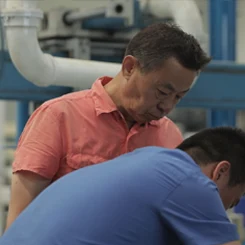Pigging System FAQs
1. Which industries use pigging systems, and what are the benefits?
Pigging systems are widely used in petrochemical, food & beverage, pharmaceutical, cosmetics, and paint & coatings industries. They efficiently recover residual product from pipelines, reduce waste, and greatly improve operational efficiency during product changeovers, cleaning, and maintenance.
2. How much does a pigging system cost?
The cost of a pigging system depends mainly on its design complexity and required cleaning standards, typically ranging from several thousand to several million euros. Customized systems can fully meet process needs while delivering significant cost savings.
3. What is the ROI (Return on Investment) for a pigging system?
ROI depends on system cost and the savings achieved. In industries with high product quality demands and high cleaning media disposal costs, ROI can often be realized within a year—or even just a few months.
4. When was pigging technology first used?
Pigging technology has been around for over 100 years. The earliest systems were developed for crude oil transport, using simple pigs to push product through pipelines. With ongoing innovation, automated pigging systems are now widely used for cleaning and product recovery.
5. Can a pigging system handle multiple products in the same pipeline?
Yes. Pigging systems can handle multiple products in the same pipeline while preventing cross-contamination, making them ideal for industries with frequent product changeovers such as food & beverage and cosmetics manufacturing.
6. What maintenance does a pigging system require?
Pigging systems require minimal maintenance but should be periodically checked for pig condition, pipeline integrity, and propellant system performance. VP designs prioritize durability and ease of maintenance, minimizing downtime and operating costs.
7. How does VP ensure pigging system safety?
VP pigging systems feature advanced safety functions including pressure sensors, speed controllers, and emergency shut-off devices. All designs meet international safety standards to minimize operational risks.
8. What is the lifespan of a pigging system?
With proper maintenance, VP pigging systems can last for decades. Lifespan depends on factors such as product type, operating environment, and adherence to maintenance schedules.
9. Can VP pigging systems be retrofitted into existing pipelines?
Yes. VP pigging systems can be successfully integrated into existing pipelines. We conduct detailed assessments to ensure compatibility and optimal performance.
10. What key factors should be considered when choosing a pigging system?
Key factors include product type, pipeline diameter and length, required cleaning efficiency, and operating frequency. VP offers tailored solutions to meet these specific needs.
11. What unique advantages does VP offer in the market?
Since 1996, VP has led in pigging technology, delivering innovative, custom solutions backed by decades of experience. Our systems are renowned for exceptional reliability, efficiency, and rapid ROI.
12. Can pigging systems handle abrasive or viscous products?
Yes. VP pigging systems can handle abrasive, viscous, and sensitive products. Pigs and pipelines are made from high-strength materials to withstand demanding conditions.
13. What is the environmental impact of using a pigging system?
Pigging systems reduce product waste, minimize cleaning chemical usage, and cut water and energy consumption—helping meet regulatory requirements and sustainability goals.
14. Do you provide support after installation?
VP provides full after-sales support, including training, maintenance services, and 24/7 technical assistance to keep your pigging system operating at peak performance.
15. Can pigging systems be automated?
Yes. VP offers fully automated pigging systems that integrate seamlessly with existing production lines, improving efficiency, reducing human error, and ensuring stable performance.
16. How do pigging systems support sustainability?
Pigging systems recover up to 99.5% of product residue from pipelines, significantly reducing waste. They also cut down on cleaning agents, water, and energy use, making operations more eco-friendly and cost-effective.
17. What services do you offer, from component supply to turnkey solutions?
Our services range from supplying pigging system components—such as launchers, receivers, and pigs—to delivering complete turnkey solutions, including process design, automation control, system installation and commissioning, operator training, spare parts supply, and comprehensive after-sales support.



